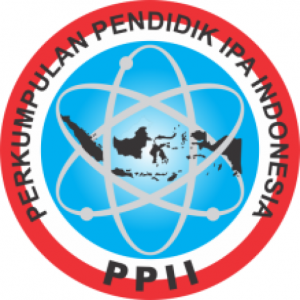Identification and Potential of Wood-Decaying Fungi from Poteran Island as a Source of Manganese Peroxidase (MnP)
Authors
Arum Maulinda Putri , Nengah Dwianita Kuswytasari , Endry Nugroho PrasetyoDOI:
10.29303/jbt.v25i4b.10368Published:
2025-11-03Issue:
Vol. 25 No. 4b (2025): Special IssueKeywords:
Fungi, Ligninolytic, Manganese-peroxidase, Poteran-Island, Trametes versicolorArticles
Downloads
How to Cite
Downloads
Abstract
Poteran Island is among the largest islands located within the Sumenep Regency, characterized by lowland agricultural areas with a dry E5 climate, allowing only one planting cycle of secondary crops per year. However, during the rainy season, the region tends to experience an abundance of wood-decaying fungi. This study aims to identify and evaluate the potential of wood-decaying fungi from Poteran Island as a source of MnP using morphological approaches. Screening of MnP-producing fungal isolates was carried out on L-MSM medium supplemented with methylene blue, and the clear zones were observed. The isolates were then identified macroscopically on petri dishes and microscopically using Lactophenol cotton blue, with reference to the book Pictorial Atlas of Soil and Seed Fungi: Morphologies of Cultured Fungi and Key to Species. Based on the morphological examination of 20 fungal isolates, 11 isolates displayed white mycelium, 1 isolate had gray mycelium, 2 isolates showed greenish-white mycelium, and 2 isolates had yellowish-white mycelium. Furthermore, 14 isolates exhibited circular colony morphology, 3 isolates were semi-circular, and 3 isolates were filamentous (filiform) in shape. MnP-producing fungal isolates were screened using L-MSM medium supplemented with methylene blue. Only one isolate, DS 18, demonstrated MnP production potential, indicated by the decolorization of methylene blue on medium. Macroscopic and microscopic analyses confirmed that isolate DS 18 is Trametes versicolor, as it exhibited similar characteristics, including a cottony texture, white color, smooth colony edges, non-septate hyphae, elliptical spores, and hyphae with clamp connections.
References
Azzahra, M, J. & A, A., (2020). Perbandingan Pertumbuhan Aspergillus fumigatus pada Media Instan Modifikasi Carrot Sucrose Agar dan Potato Dextrose Agar. Jurnal Mikologi Indonesia, 4(1), pp.168-174. DOI: 10.46638/jmi.v4i1.69
Bhadra, F., Gupta, A., Vasundhara, M. & Reddy M. S., (2022). Endophytic fungi: a potential source of industrial enzyme producers. Journal 3 Biotech, 12(4), pp. DOI: 10.1007/s13205-022-03145-y
Bilal, M., Zdarta, J., Jesionowski, T. & Iqbal, H. M., (2023). Manganese peroxidases as robust biocatalytic tool — An overview of sources, immobilization, and biotechnological applications. International Journal of Biological Macromolecules, p. https://doi.org/10.1016/j.ijbiomac.2023.123531
Chowdhary, P., Shukla, G., Raj, G. & Ferreira, L. F. R., (2019). Microbial manganese peroxidase: a ligninolytic enzyme and its ample opportunities in research. Springer Nature Jurnal, 1(45), pp. DOI: 10.1007/s42452-018-0046-3
Cody, B. R., (2011). Trametes versicolor (L.) Lloyd.. North Carolina.: N. C. University.
Dix, N. & J.Webster, (1995). Fungal ecology. London, UK: Chapman & Hall. https://doi.org/10.1007/978-94-011-0693-1_12
Efiyanti, L. & Hidayat, A., (2017). Seleksi Jamur Pelapuk Putih Hutan Tropis Indonesia Sebagai Penghasil Enzim Lakase (Lac) dan Manganese peroksidase (MnP). Jurnal Penelitian Hasil Hutan, 35(3), pp.185-195. DOI: 10.20886/jphh.2017.35.3.185-195
Ferdiansyah, H. I., Pratikto, I. & Suryono, (2019). Pemetaan Kesesuaian Lahan Untuk Budidaya Rumput Laut Di Perairan Pulau Poteran, Kabupaten Sumenep, Jawa Timur. Journal of Marine Research, 8(1), pp. 36-40. DOI: DOI: https://doi.org/10.14710/jmr.v8i1.24324
Hasibuan, I. R., Antara, N. S. & Wijaya, I. M. M., (2021). Isolasi dan Karakterisasi Jamur Pelapuk Putih Pendegradasi Lignin dariLimbahCair Pulp dan Kayu Lapuk Eukaliptus (Eucalyptus sp). Jurnal Rekayasa dan Manajemen Agroindustri, 9 (1), pp. 119-129. DOI: 10.24843/JRMA.2021.v09.i01.p12
Herliyana, E. N., Maryam, L. F. & Hadi, Y. S., (2011). Schizophyllum commune Fr. Sebagai Jamur Uji Ketahanan Kayu Standar Nasional Indonesia pada Empat Jenis Kayu Rakyat : Sengon (P . falcataria), Karet (H. brasiliensis), Tusam (P. merkusii), Mangium (A. mangium). Jurnal Silvikultur Tropika, 2(3), p. 176 – 180. DOI: https://doi.org/10.29244/j-siltrop.2.3.%25p
Idris, Ramadhani, I., Kanti, A. & Sudiana, I. M., (2019). Screening of potential lignin- degrading fungi from the tropical forest for lignocellulose biotreatment. Earth and Environmental Science , pp. doi:10.1088/1755-1315/308/1/012014
Jaya, G. P., Siregar, E. B. M. & Anna, N., (2018). Uji Potensi Fungi Pelapuk Putih Pada Kayu Karet Lapuk (Hevea brasilliensis Muell. Arg) Sebagai Pendegradasi Lignin Test of Potential White Rot Fungi at Rotten Karet Wood (Hevea bresilliensis Muell. Arg) as degrading lignin. Peronema Forestry Science Journal, 4(2).
Kameshwar, A. K. S. & Qin, W., (2016). Qualitative and Quantitative Methods for Isolation and Characterization of Lignin-Modifying Enzymes Secreted by Microorganisms. Bioenerg. Res., pp. DOI 10.1007/s12155-016-9784-5
Koentjoro, M. P., Masruroh, I., Isdiantoni & Prasetyo, E. N., (2021). Diseminasi Cara Hidup Sehat dan Sanitasi Di Kawasan Pesisir Pulauan Kecil Poteran, Sumenep Madura. Jurnal Masyarakat Mandiri, 5(3), pp. 1113-1120. DOI: 10.31764/jmm.v5i3.5011
Kumar, A. & Arora, P. K., (2022). Biotechnological Applications of Manganese Peroxidases for Sustainable Management. Front. Environ. Sci., V olume 10, p. https://doi.org/10.3389/fenvs.2022.875157
Li, T. et al., (2022). Wood decay fungi: an analysis of worldwide research. Journal of Soils and Sediments, Volume 22, p. 1688–1702. https://link.springer.com/article/10.1007/s11368-022-03225-9
Norfajrina, Istiqamah & Indriyani, S., (2021). Jenis-Jenis Jamur (Fungi) Makroskopis Di DesaBandar Raya Kecamatan Tamban Catur. Science and Local Wisdom Journal, 1(1), pp. 17-33. DOI: https://doi.org/10.18592/ak.v1i1.5156
Risdianto, H., Setiadi, T., Suhardi, S. H. & Niloperbowo, W., (2007). Pemilihan Spesies Jamur Dan Media Imobilisasi Untuk Produksi Enzim Ligninolitik. Prosiding Seminar Nasional Rekayasa Kimia Dan Proses , p. ISSN : 1411 – 4216.
Ruhimat, R., Djajakirana, G. & Antonius, S., (2022). Fungi Dekomposer Penghasil Enzim Ekstraseluler Lakase, Mangan Peroksidase, dan Lignin Peroksidase dari Kawasan Kebun Raya Bogor: Isolasi, Seleksi, Identifikasi dan Kajian Aktivitas Enzimnya. Jurnal Biologi Indonesia, 18(1), p. DOI: 10.47349/jbi/18012022/111
Smith, A. H., 1949. Mushroom in Their Natural Habitat. Michigan. s.l.: Hafner Press.
Sumenep, B. K., 2020. Kabupaten Sumenep dalam Angka (B. K. Sumenep (ed.); 2020th ed.). ISSN: 0215.6199. https://sumenepkab.go.id/uploads/docu ment/books/SUMENEP- DALAM%20ANGKA-2020.pdf
Suryadi, H., Judono, J. J., Putri, M. R. & Eclessia, A. D., (2022). Biodelignification of lignocellulose using ligninolytic enzymes from white-rot fungi. Journal Heliyon, p. https://doi.org/10.1016/j.heliyon.2022. e 08865.
Swasono, M. N. & Suryani, T., (2018). Eksplorasi dan inventarisasi jamur pelapuk kayu di kawasan hutan bagian timur lereng Gunung Merapi, Jawa Tengah, via Selo Boyolali. Seminar Nasional Pendidikan Biologi dan Saintek III. ISSN: 2527– 533X.
Watanabe, T., (2002). Pictorial Atlas of Soil and Seed Fungi Morphologies of Cultured Fungi and Key to Species. Ed ke-2 ed. USA: CRC Press. DOI: 10.1201/9781420040821
Zhou, S., Du, Z., Li, X. & Zhang, Y., 2019. Degradation of methylene blue by natural manganese oxides: kinetics and transformation products. The Royal Society, p. https://doi.org/10.1098/rsos.190351
License
Copyright (c) 2025 Arum Maulinda Putri, Nengah Dwianita Kuswytasari, Endry Nugroho Prasetyo

This work is licensed under a Creative Commons Attribution 4.0 International License.

Jurnal Biologi Tropis is licensed under a Creative Commons Attribution 4.0 International License.
The copyright of the received article shall be assigned to the author as the owner of the paper. The intended copyright includes the right to publish the article in various forms (including reprints). The journal maintains the publishing rights to the published articles.
Authors are permitted to disseminate published articles by sharing the link/DOI of the article at the journal. Authors are allowed to use their articles for any legal purposes deemed necessary without written permission from the journal with an acknowledgment of initial publication to this journal.

























